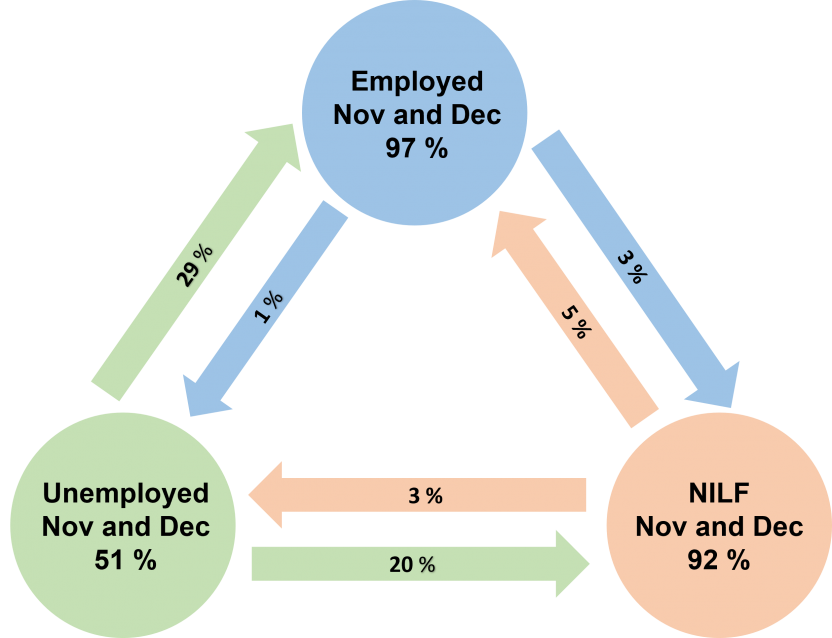Participation rate, Seasonally adjusted
[["Dec-11","Jan-12","Feb-12","Mar-12","Apr-12","May-12","Jun-12","Jul-12","Aug-12","Sep-12","Oct-12","Nov-12","Dec-12","Jan-13","Feb-13","Mar-13","Apr-13","May-13","Jun-13","Jul-13","Aug-13","Sep-13","Oct-13","Nov-13","Dec-13","Jan-14","Feb-14","Mar-14","Apr-14","May-14","Jun-14","Jul-14","Aug-14","Sep-14","Oct-14","Nov-14","Dec-14","Jan-15","Feb-15","Mar-15","Apr-15","May-15","Jun-15","Jul-15","Aug-15","Sep-15","Oct-15","Nov-15","Dec-15","Jan-16","Feb-16","Mar-16","Apr-16","May-16","Jun-16","Jul-16","Aug-16","Sep-16","Oct-16","Nov-16","Dec-16","Jan-17","Feb-17","Mar-17","Apr-17","May-17","Jun-17","Jul-17","Aug-17","Sep-17","Oct-17","Nov-17","Dec-17","Jan-18","Feb-18","Mar-18","Apr-18","May-18","Jun-18","Jul-18","Aug-18","Sep-18","Oct-18","Nov-18","Dec-18","Jan-19","Feb-19","Mar-19","Apr-19","May-19","Jun-19","Jul-19","Aug-19","Sep-19","Oct-19","Nov-19","Dec-19","Jan-20","Feb-20","Mar-20","Apr-20","May-20","Jun-20","Jul-20","Aug-20","Sep-20","Oct-20","Nov-20","Dec-20","Jan-21","Feb-21","Mar-21","Apr-21","May-21","Jun-21","Jul-21","Aug-21","Sep-21","Oct-21","Nov-21","Dec-21"],[[65.106942200000006],[65.307897600000004],[65.102525600000007],[65.338729799999996],[65.050581699999995],[65.352979000000005],[65.094892799999997],[65.062475599999999],[65.019672400000005],[65.324465099999998],[65.182223500000006],[64.945213699999996],[65.038802500000003],[65.276713099999995],[65.204130599999999],[65.078847600000003],[65.142354499999996],[65.032859200000004],[65.085423899999995],[64.872501999999997],[64.942053299999998],[64.846909600000004],[64.833964100000003],[64.617680500000006],[64.449153999999993],[64.567346099999995],[64.551627100000005],[64.746106699999999],[64.668706799999995],[64.572571300000007],[64.685069200000001],[64.771703900000006],[64.653691300000006],[64.658823999999996],[64.646819300000004],[64.5409693],[64.623232200000004],[64.740386099999995],[64.887830399999999],[64.861186500000002],[64.798549499999993],[64.8611547],[64.821740500000004],[65.093176700000001],[64.932664500000001],[64.983249499999999],[65.153373299999998],[65.229210399999999],[65.118317399999995],[65.228385500000002],[64.987084800000005],[64.9385257],[64.895881700000004],[64.872734500000007],[64.905811700000001],[64.963249099999999],[64.662502799999999],[64.493226500000006],[64.527801199999999],[64.711976399999998],[64.785790399999996],[64.6700515],[64.684845199999998],[64.904794699999997],[64.945062199999995],[64.973941600000003],[65.125783900000002],[65.177000899999996],[65.301279500000007],[65.323811899999995],[65.242676900000006],[65.501530200000005],[65.757939100000002],[65.764206700000003],[65.664649100000005],[65.587497999999997],[65.623194499999997],[65.453797300000005],[65.715510600000002],[65.541503500000005],[65.639018699999994],[65.420136299999996],[65.493854400000004],[65.668838100000002],[65.618849900000001],[65.722819200000004],[65.550783100000004],[65.695431499999998],[65.909907500000003],[66.034177299999996],[66.041067400000003],[66.056947899999997],[66.153363799999994],[66.070211599999993],[65.891220700000005],[65.909203000000005],[65.869100700000004],[66.028241399999999],[65.865079100000003],[65.857088500000003],[63.5743735],[62.628868099999998],[64.061377199999995],[64.662426499999995],[64.950659099999996],[64.792827000000003],[65.665933100000004],[66.035553500000006],[66.038690799999998],[66.0428462],[66.060900000000004],[66.304279199999996],[65.971162500000005],[66.253747000000004],[66.259625700000001],[66.041949099999997],[65.197510399999999],[64.524477899999994],[64.648258299999995],[66.071415400000006],[66.087290999999993]],[[71.814527799999993],[72.143422599999994],[71.793846500000001],[71.764539600000006],[71.681086899999997],[71.766559200000003],[71.598765099999994],[71.505534400000002],[71.595934499999998],[71.808905999999993],[71.756130999999996],[71.468508799999995],[71.715701999999993],[71.921121999999997],[71.674953700000003],[71.528664899999995],[71.479268500000003],[71.561720500000007],[71.623963500000002],[71.276305300000004],[71.332528999999994],[71.191019999999995],[71.206883700000006],[71.019642200000007],[70.894383500000004],[70.834462099999996],[70.717556299999998],[70.925015999999999],[71.010580000000004],[70.693057999999994],[70.893973099999997],[71.009139000000005],[70.882427800000002],[70.732157400000006],[70.839144700000006],[71.081115699999998],[70.843091700000002],[71.082121700000002],[71.190376400000005],[71.281417099999999],[71.075183300000006],[71.040078399999999],[70.883160500000002],[71.052293700000007],[70.949342400000006],[70.940875300000002],[71.095519600000003],[70.940492199999994],[70.916653600000004],[71.2967996],[70.732648699999999],[70.770364599999994],[70.527768800000004],[70.650831699999998],[70.412452000000002],[70.615737499999994],[70.447917099999998],[70.071200700000006],[70.242105600000002],[70.336212599999996],[70.532432600000007],[70.189263400000002],[70.377037400000006],[70.471125099999995],[70.626570000000001],[70.610722800000005],[70.586371499999998],[70.810529500000001],[70.7911821],[70.7351539],[70.577709499999997],[70.927177999999998],[71.104235000000003],[71.208700300000004],[70.973692999999997],[70.802703300000005],[70.905309700000004],[70.740986100000001],[70.9914469],[70.976770099999996],[71.074275700000001],[70.729132300000003],[70.793888100000004],[71.047364400000006],[70.966256099999995],[70.976174700000001],[70.712251100000003],[70.941096999999999],[70.932551799999999],[71.5261213],[71.343514099999993],[71.323098000000002],[71.339021900000006],[71.130406199999996],[70.840947600000007],[70.928617299999999],[70.861889700000006],[70.759309000000002],[70.730776199999994],[70.705347099999997],[68.828168399999996],[67.977351499999997],[69.146539000000004],[69.690533599999995],[69.903548799999996],[69.665977799999993],[70.692990699999996],[70.982861700000001],[70.958205899999996],[71.131913600000004],[70.898398299999997],[70.919610800000001],[70.788588099999998],[70.946772800000005],[71.048078799999999],[70.816214500000001],[70.062219799999994],[69.242958999999999],[69.509279100000001],[70.717449000000002],[70.847379000000004]],[[58.591967699999998],[58.6684214],[58.602903599999998],[59.096787499999998],[58.609078199999999],[59.121503199999999],[58.774996000000002],[58.801406499999999],[58.628881700000001],[59.022643000000002],[58.793996800000002],[58.606682200000002],[58.551569200000003],[58.821861300000002],[58.918725199999997],[58.814637400000002],[58.987797],[58.691899499999998],[58.735062900000003],[58.6545822],[58.738631599999998],[58.690049600000002],[58.652131599999997],[58.410710199999997],[58.203240399999999],[58.493533200000002],[58.575400700000003],[58.756819800000002],[58.522254599999997],[58.641422200000001],[58.669014599999997],[58.729115399999998],[58.620672599999999],[58.777402899999998],[58.651253799999999],[58.209783899999998],[58.603192499999999],[58.603143199999998],[58.789284199999997],[58.649538499999998],[58.726762800000003],[58.884833100000002],[58.959961900000003],[59.331513000000001],[59.116530699999998],[59.225386999999998],[59.411951100000003],[59.712320800000001],[59.518770000000004],[59.368511099999999],[59.439377399999998],[59.307977999999999],[59.459251500000001],[59.295819999999999],[59.591746299999997],[59.509200200000002],[59.081007],[59.112614899999997],[59.016130500000003],[59.287623500000002],[59.243823800000001],[59.3471093],[59.1947598],[59.535789899999997],[59.464976100000001],[59.536994],[59.858795899999997],[59.743746700000003],[60.007213499999999],[60.106187599999998],[60.099068799999998],[60.2710157],[60.604353000000003],[60.515505599999997],[60.546089500000001],[60.558979600000001],[60.529787900000002],[60.3551492],[60.627337400000002],[60.299728199999997],[60.397284900000002],[60.300221999999998],[60.382994400000001],[60.4826871],[60.463115700000003],[60.6572946],[60.573398900000001],[60.636396400000002],[61.066140300000001],[60.738038899999999],[60.9278628],[60.979451699999998],[61.154139200000003],[61.192607899999999],[61.1209621],[61.0726668],[61.059079500000003],[61.471048699999997],[61.178897200000002],[61.188397299999998],[58.515310100000001],[57.478771700000003],[59.164975300000002],[59.821238800000003],[60.182176400000003],[60.101387000000003],[60.826706700000003],[61.273479000000002],[61.303742100000001],[61.144577400000003],[61.404636400000001],[61.861738799999998],[61.334072499999998],[61.736372000000003],[61.650364699999997],[61.446474899999998],[60.515112999999999],[59.982970199999997],[59.9700542],[61.600589200000002],[61.507206099999998]]]
[]
[{"axis_id":"0","tick_interval":"6","axis_min":"","axis_max":"","axis_title":"","precision":-1,"axis_units":"","tooltip_units":"","table_units":"","data_unit_prefix":"","data_unit_suffix":"","reverse_axis":false}][{"axis_id":"0","tick_interval":"5","axis_min":"55.0","axis_max":"75.0","axis_title":"%","precision":"1","table_units":"(%)","tooltip_units":"(%)","axis_units":"","data_unit_prefix":"","data_unit_suffix":"","reverse_axis":false},{"axis_id":"1","tick_interval":"","axis_min":"","axis_max":"","axis_title":"","precision":"","table_units":"(%)","tooltip_units":"(%)","axis_units":"","data_unit_prefix":"","data_unit_suffix":"","reverse_axis":false}]